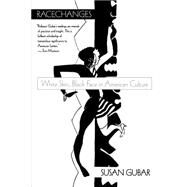Racechanges White Skin, Black Face in American Culture
, by Gubar, Susan- ISBN: 9780195134186 | 0195134184
- Cover: Paperback
- Copyright: 4/20/2000
When the actor Ted Danson appeared in blackface at a 1993 Friars Club roast, he ignited a firestorm of protest that landed him on the front pages of the newspapers, rebuked by everyone from talk show host Montel Williams to New York City's then mayor, David Dinkins. Danson's use of blackface was shocking, but was the furious pitch of the response a triumphant indication of how far society has progressed since the days when blackface performers were the toast of vaudeville, or was it also an uncomfortable reminder of how deep the chasm still is separating black and white America? In Racechanges: White Skin, Black Face in American Culture , Susan Gubar, who fundamentally changed the way we think about women's literature as co-author of the acclaimed The Madwoman in the Attic , turns her attention to the incendiary issue of race. Through a far-reaching exploration of the long overlooked legacy of minstrelsy--cross-racial impersonations or "racechanges"--throughout modern American film, fiction, poetry, painting, photography, and journalism, she documents the indebtedness of "mainstream" artists to African-American culture, and explores the deeply conflicted psychology of white guilt. The fascinating "racechanges" Gubar discusses include whites posing as blacks and blacks "passing" for white; blackface on white actors in The Jazz Singer, Birth of a Nation , and other movies, as well as on the faces of black stage entertainers; African-American deployment of racechange imagery during the Harlem Renaissance, including the poetry of Anne Spencer, the black-and-white prints of Richard Bruce Nugent, and the early work of Zora Neale Hurston; white poets and novelists from Vachel Lindsay and Gertrude Stein to John Berryman and William Faulkner writing as if they were black; white artists and writers fascinated by hypersexualized stereotypes of black men; and nightmares and visions of the racechanged baby. Gubar shows that unlike African-Americans, who often are forced to adopt white masks to gain their rights, white people have chosen racial masquerades, which range from mockery and mimicry to an evolving emphasis on inter-racial mutuality and mutability. Drawing on a stunning array of illustrations, including paintings, film stills, computer graphics, and even magazine morphings, Racechanges sheds new light on the persistent pervasiveness of racism and exciting aesthetic possibilities for lessening the distance between blacks and whites.







